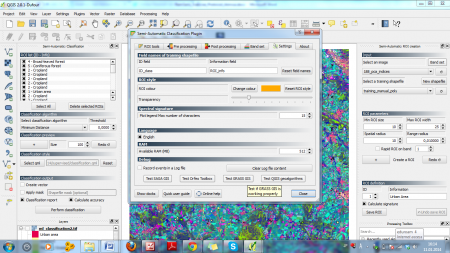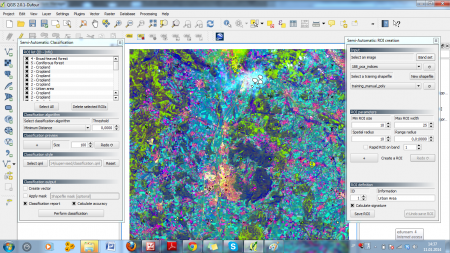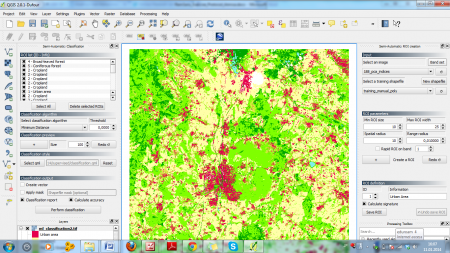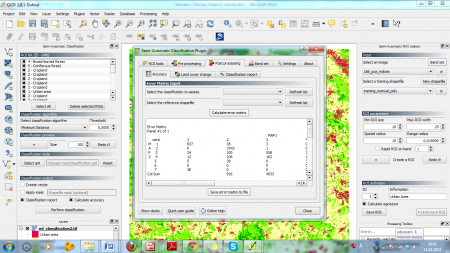Supervised classification (Tutorial)
From AWF-Wiki
| sorry: |
This section is still under construction! This article was last modified on 02/24/2014. If you have comments please use the Discussion page or contribute to the article! |
- This article is part of the QGIS tutorial 2013/14.
In this article, you will learn how to conduct a supervised image classification in QGIS 2.0
- First, you need to install the Semi Automatic Class Plugin
- Click Manage and install plugins.
- In the appearing menu, select Add more.
- Browse for the plugin (it's most comfortable to use the search-field).
- Click Install
- Testing the plugin
- For the plugin to work, you need to make sure that your installations of GRASS GIS, ORFEO Toolbox and SAGA GIS work correctly.
- With the plugin installed, select Raster --> Semi Automatic Class Plugin.
- In the appearing menu, select the Settings tab (figure A). Click Test Grass GIS and wait until the message Test OK appears. Do the same the Orfeo Toolbox, Saga and Qgis geoalgorithms.
- Classification
- Add the raster map 188_pca_indices.tif from the course data (see previous exercises).
- Also add the vector layer Training_manual_poly.shp.
- In the Semi Automatic Class Plugin, go to the Semi Automatic ROI Creation tab.
- In the ROI Definition section select ID: 1 and for Information enter Urban area and click + to add a ROI (figure B). Not sure about this... - Levent (talk)
- In the Classification algorithm section, choose Minimum distance. Click + in the Classification preview section.
- For Classification style click Select qml and browse for the file classification.qml from the course data. Click + to confirm and select any part of the image. A message will appear that the algorithm is executing. Wait until it has finished.
- In the Classification output section, check the Classificatin report and Calculate accuracy boxes.
- Click Perform classification. Enter name and path for the output map (e.g. ml_classification.tif) and wait for the classification to finish (figure C).
- Trying alternative algorithms
- To get an impression of results depending on the alorithm selected, try the Maximum likelihood classifier as Classification algorithm.
- Assessing classification accuracy: the error matrix
- In the Semi Automatic classification dialogue (figure D), select the Post processing tab to view the error matrix. If desired, it can be saved for future reference.



